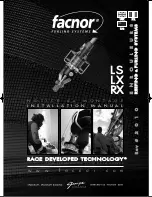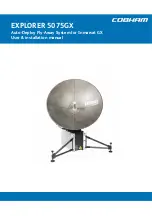
25 July 1996
23 mm Transponder Reference Manual
Page 11 of 22
6. EMI/EMC Performance
6.1 General
For any given RF-ID system, the EMI/EMC performance is determined by three factors:
1. The reader design and the resulting noise immunity performance
2. The signal strength of the transponder and Signal/Noise ratio at the receiver input
3. The transponder immunity to EM fields:
-
The most critical EMI factor or component in a system is the reader immunity.
-
A high transponder data signal facilitates reader design through the higher Signal/Noise.
ratio
-
The least critical component is the transponder. Immunity levels are generally very high.
All EMI sources can be classified into three different categories:
a.
Broad band "industrial" noise of sporadic or continuous nature
b.
Discrete radio frequency signals unmodulated or FM /FSK modulated
c.
Discrete radio frequency signals which are AM or ASK modulated.
6.2 The Automotive Environment and Factors
In an automotive environment all noise types are present and potentially cause EMI problems.
Especially the increased application of electronics and communication systems in cars employing
digital and ASK type modulation techniques can produce and emit high field strength levels.
The highest energy noise sources are in the low frequency part of the spectrum at frequencies
from a few cycles up to a few kHz. The sources are actuators, solenoid switching, ignition,
motors, control circuitry and so on. They pollute the car environment, either by direct emission,
or by induction, or by conducted radiation.
Above 10 kHz, the noise levels decay quickly at a rate of 20...40 dB/octave. RFID systems
emitting and receiving data signals at these or higher frequencies are less affected by EMI.
6.3 TIRIS Pulsed FM Transponder and System Performance
EMI measurement procedures which are most currently cited (for example the DIN 40839/part4)
are inappropriate to:
a. determine a realistic RF-ID
system behavior
for an automotive environment
b. determine the EMI performance and threshold of transponder
c. test systems at worst case (low frequency) conditions.
However the TIRIS transponder meets and exceeds the DIN40839/part4.








































